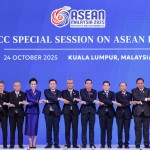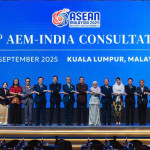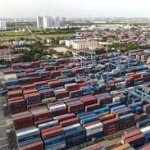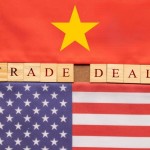Total number of posts 414.
India has recently officially imposed a five-year anti-dumping duty on some steel products imported from Vietnam to protect the domestic steel industry. The decision was made according to an official notice dated November 12, 2025, after Indian authorities determined that steel imports from Vietnam caused significant damage to domestic producers. This move marks a new challenge for Vietnamese steel exports, and forces businesses and managers to take a closer look at the issue of proving origin, price and international competitiveness.

According to an official notice from the Government of India dated November 12, 2025, the country has imposed a five-year anti-dumping duty on some steel products originating from Viet Nam.
The decision was made after Indian authorities confirmed that imports of steel from Viet Nam at lower prices than normal have caused “significant injury” to the domestic steel industry.
The notice stated that the affected products are certain types of hot-rolled flat steel and alloy or non-alloy variants originating from Viet Nam. Although no specific tax rates for each product were announced, the five-year application period shows the seriousness of the assessment by India.
For Viet Nam, steel exports to India have increased sharply in recent years and Viet Nam is one of the main sources of steel imported into the Indian market. The long-term imposition of anti-dumping duties will make it more difficult for Vietnamese businesses to maintain their price competitiveness, and they will have to reconsider their export strategies – especially in proving product origin, complying with Indian import standards and avoiding further protectionist measures.
Trade analysts say the move reflects India’s increasingly clear trend of protecting its domestic manufacturing industry from a wave of cheap imports from other countries, including Viet Nam – especially from the perspective of the global steel supply chain. For Vietnamese businesses, this is a warning sign that they need to improve product quality, diversify export markets and tighten regulations on origin, prices and imported goods.
On the policy side, the Ministry of Industry and Trade and Viet Nam steel industry associations are recommended to take early action: reviewing the list of products exported to India, assessing risks from trade defense measures, strengthening the system of certificates of origin, and enhancing dialogue with the Indian side to seek cooperative solutions.
The long-term results of this measure will depend on the market response and the adaptability of Vietnamese enterprises. Without a suitable solution, Viet Nam's steel exports to India may be affected for a long time, reducing the motivation to expand the market and affecting the industry value chain in the region.
Source: Compiled by the Multilateral Trade Policy Department, Ministry of Industry and Trade of Viet Nam














